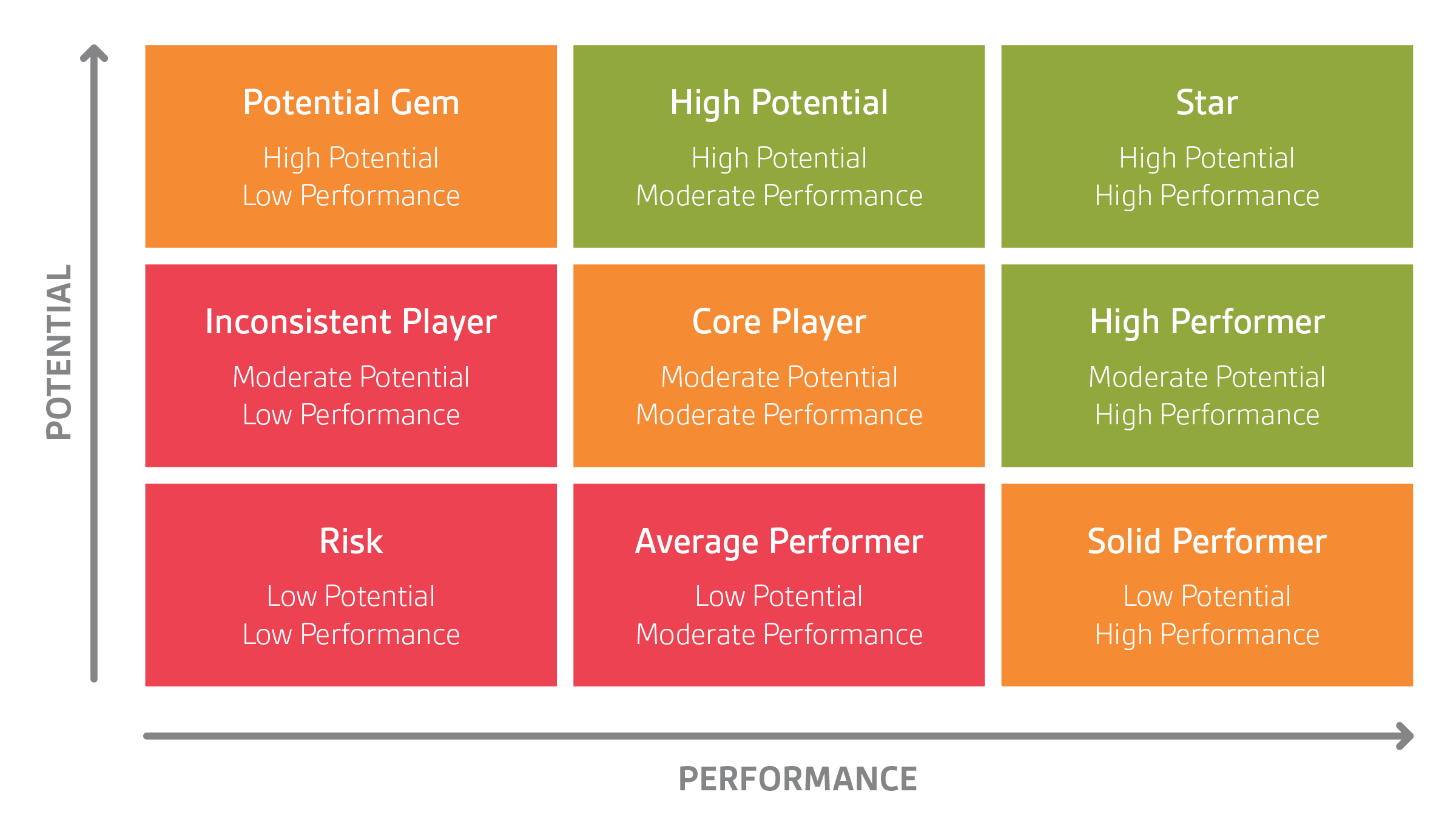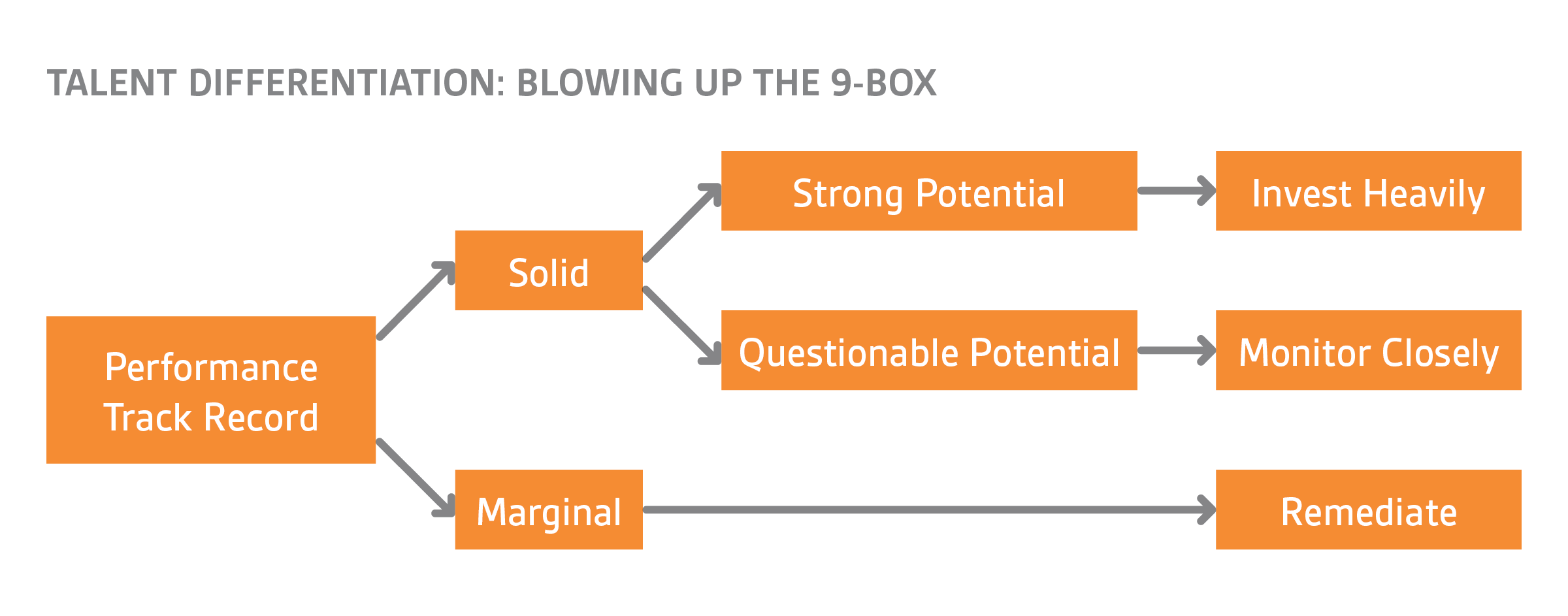Thinking Outside The 9-Box


For time immemorial (well, since the 1970s when it was developed by McKinsey & Co.), the 9-box grid has been the model used for succession planning. Although it’s still firmly on the curriculum of many MBA programs and entrenched in organizational talent models, it’s actually well beyond its expiry date. While there are alternatives, they’re currently underused as organizations can be reluctant to move away from this tried-and-tested approach. In this post, I’d like to propose a more efficient and effective alternative.
Despite the long history of the 9-box, we know this legacy approach doesn’t work for today’s organizations. Some of the key reasons I typically include here:
• We spend too much time discussing the wrong people and issues. Senior leaders working on talent management should spend the vast majority of their time discussing the next generation of leadership—not debating the placement of underperformers.
• Potential is extremely difficult to quantify. Measuring performance isn’t always easy, yet it is much more straightforward than measuring potential. Talent discussions focused on the 9-box frequently impute performance for potential. Consciously or unconsciously, leaders tend to gravitate toward the idea that past performance reflects future potential.
• Bias frequently creeps into the discussion. As leaders attempt to determine exact placement within the grid, their conversations become less unstructured and more guided by anecdotes. They are looking for any information possible to make fine distinctions among people. Often isolated incidents based on access to senior leadership (or other systemic bias) anchor the discussion in inaccurate ways.

Using the 9-box process, senior teams are spending time on talent segments, which do not drive business success.
Yes, absolutely! The particulars of the approach will vary from company to company, based on their level of maturity with talent management and succession planning. The graphic below shows a general model for succession planning that’s working well with many of our clients—from large, sophisticated multinationals to smaller, private companies just starting to think about succession planning. In this model, performance is considered “table stakes” for being considered as a possible successor. Next, we recommend using objective assessment data to determine leaders’ readiness to scale into roles with greater scope and complexity. Those who are most ready should be fast-tracked into developmental programs, special projects, or given rotational assignments to accelerate their succession readiness further. Those currently less ready to scale should have access to development opportunities with an expectation of increasing readiness over a longer timeline. By focusing on the talent most ready to scale, organizations can focus their attention and scarce development resources on those who are most likely to be ready sooner.

Much of the information that goes into traditional 9-box conversations are based on anecdotal evidence prone to bias. Our alternative approach relies heavily on objective assessment data to guide the conversation. While we believe that assessments should augment, not replace, your internal insights—objective assessment data is helpful in challenging preconceived notions about leadership and succession readiness. We often see conversations that integrate candid discussions of performance alongside objective assessment data and uncover previously overlooked talent (often from marginalized groups). Likewise, companies avoid making costly mistakes by anchoring on strong performers who fit the standard prototype of a leader yet have plateaued.
Chief Executive Group exists to improve the performance of U.S. CEOs, senior executives and public-company directors, helping you grow your companies, build your communities and strengthen society. Learn more at chiefexecutivegroup.com.
0

1:00 - 5:00 pm
Over 70% of Executives Surveyed Agree: Many Strategic Planning Efforts Lack Systematic Approach Tips for Enhancing Your Strategic Planning Process
Executives expressed frustration with their current strategic planning process. Issues include:
Steve Rutan and Denise Harrison have put together an afternoon workshop that will provide the tools you need to address these concerns. They have worked with hundreds of executives to develop a systematic approach that will enable your team to make better decisions during strategic planning. Steve and Denise will walk you through exercises for prioritizing your lists and steps that will reset and reinvigorate your process. This will be a hands-on workshop that will enable you to think about your business as you use the tools that are being presented. If you are ready for a Strategic Planning tune-up, select this workshop in your registration form. The additional fee of $695 will be added to your total.

2:00 - 5:00 pm
Female leaders face the same issues all leaders do, but they often face additional challenges too. In this peer session, we will facilitate a discussion of best practices and how to overcome common barriers to help women leaders be more effective within and outside their organizations.
Limited space available.

10:30 - 5:00 pm
General’s Retreat at Hermitage Golf Course
Sponsored by UBS
General’s Retreat, built in 1986 with architect Gary Roger Baird, has been voted the “Best Golf Course in Nashville” and is a “must play” when visiting the Nashville, Tennessee area. With the beautiful setting along the Cumberland River, golfers of all capabilities will thoroughly enjoy the golf, scenery and hospitality.
The golf outing fee includes transportation to and from the hotel, greens/cart fees, use of practice facilities, and boxed lunch. The bus will leave the hotel at 10:30 am for a noon shotgun start and return to the hotel after the cocktail reception following the completion of the round.